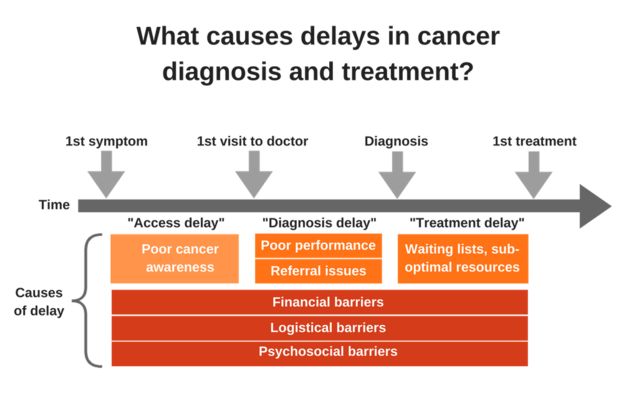Barriers to early cancer diagnosis and treatment
Early diagnosis programmes focus on reducing delays between the detection of first symptoms and treatment by ensuring that:
- people are sensitized enough to consult health professionals as soon as symptoms appear, without being delayed by any financial, logistical or psychosocial barriers;
- the health staff consulted react appropriately and rapidly, thanks to adequate training and clear referral guidelines; and
- diagnostic and treatment services are accessible rapidly and deliver optimal quality at an affordable cost.
At all stages, barriers can reduce patients’ chances of being diagnosed and treated quickly. These include poor cancer awareness among the public; suboptimal knowledge at the primary health care level about cancer symptoms and/or adequate diagnosis follow-up; poor accessibility; low affordability and/or quality of diagnosis and treatment services (waiting lists, errors in diagnosis, administrative red tape, unclear referral pathways, etc.); and the many logistical, financial and psychosocial barriers preventing patients from accessing services rapidly.
A major objective of early diagnosis programmes is to reduce the prevalence of these barriers. This is also a prerequisite for implementing screening programmes, as to be successful they require rapid, adequate-quality diagnosis follow-up and treatment for people screened positive.
Early diagnosis programmes are comparatively easy and inexpensive to implement; since they cover symptomatic patients only, they are less extensive than screening programmes that target entire populations.

WHO



